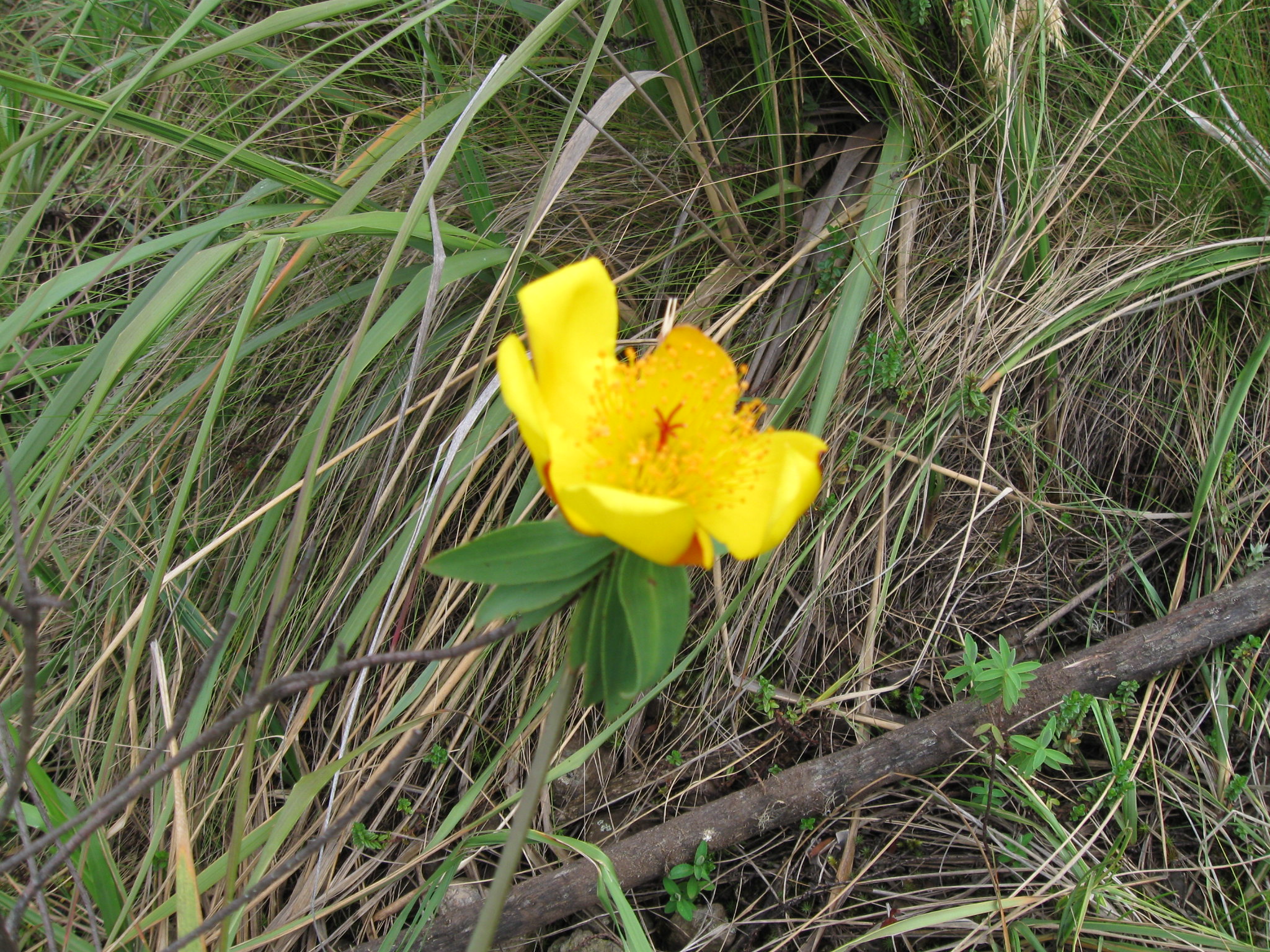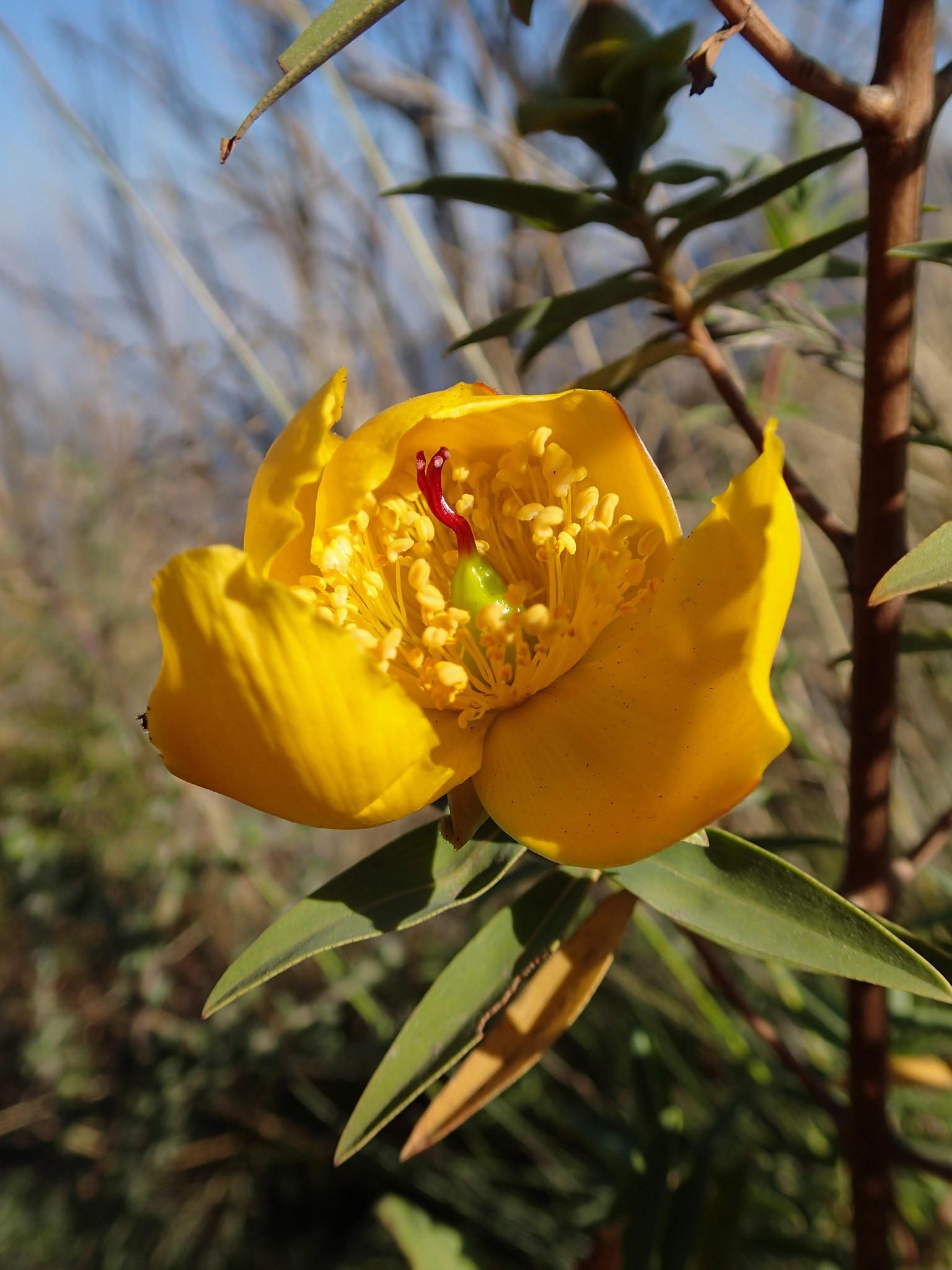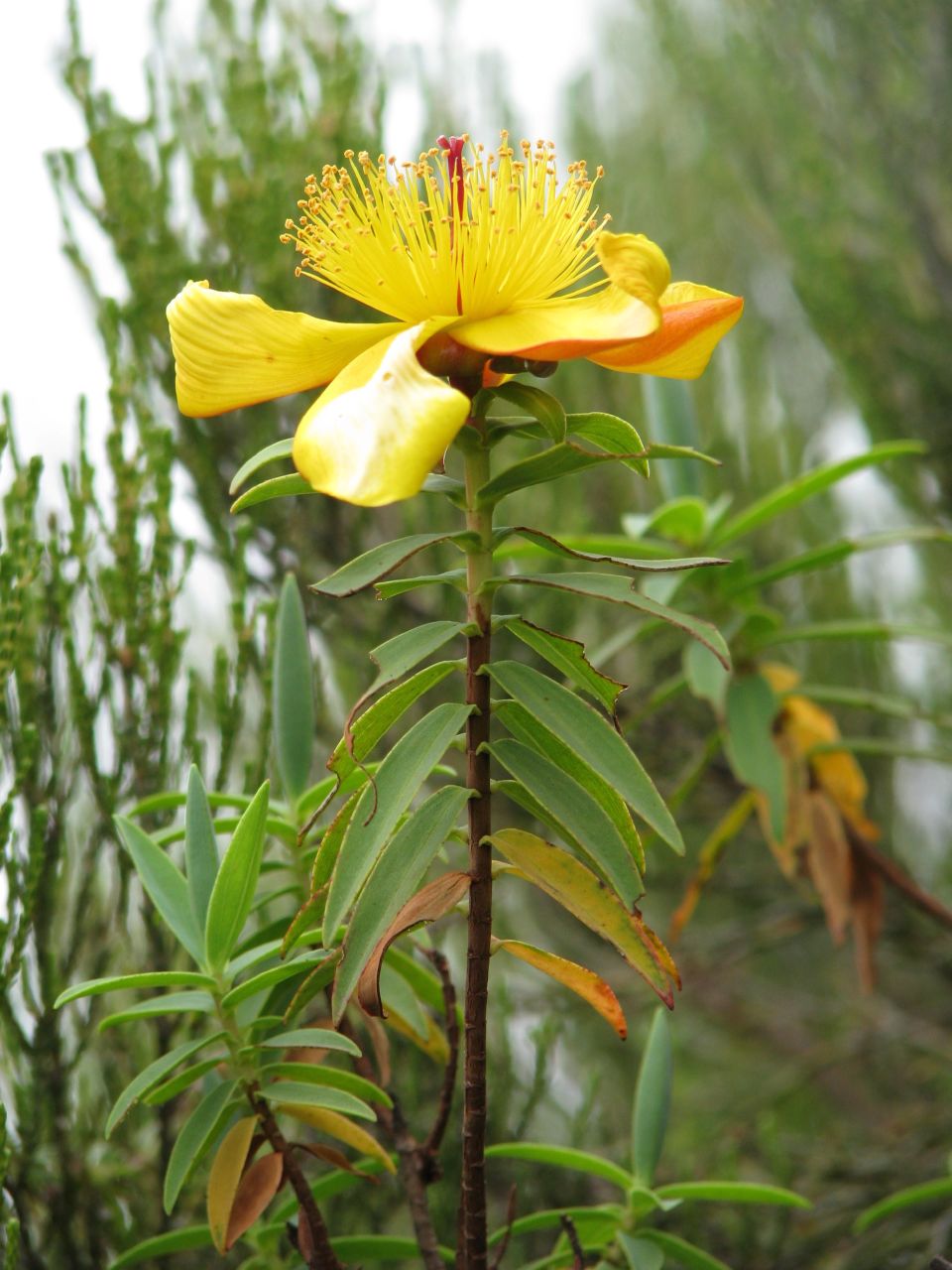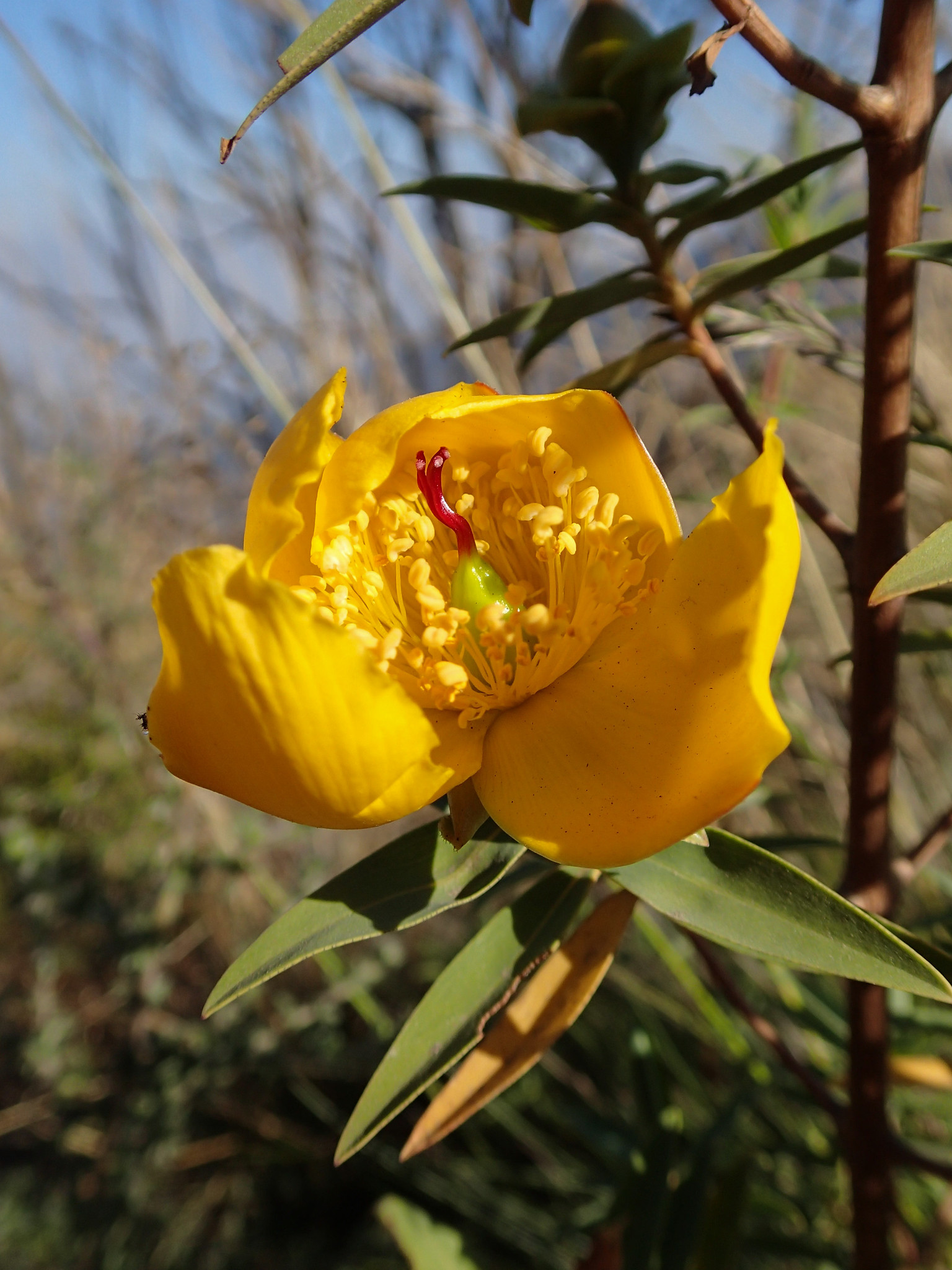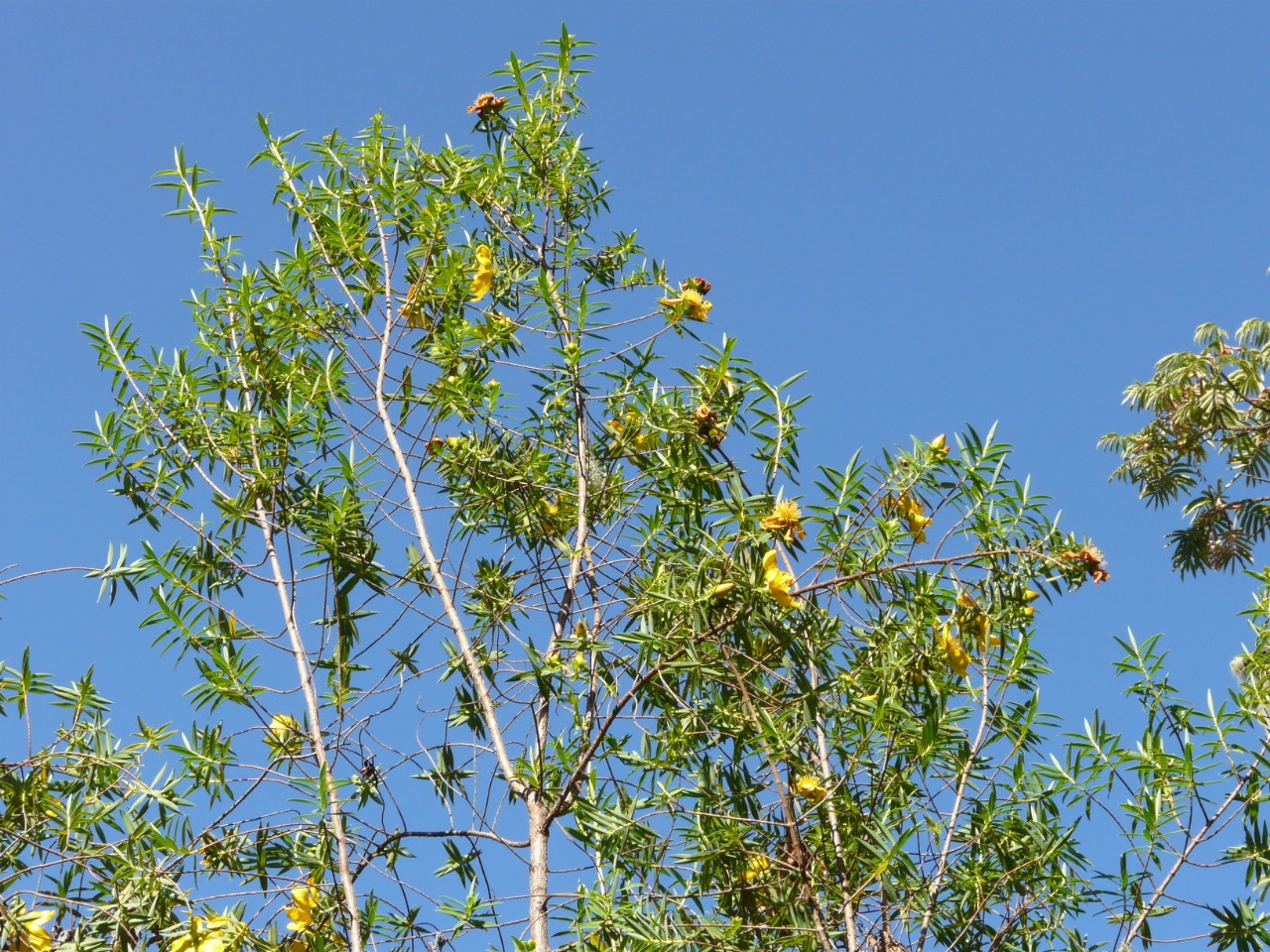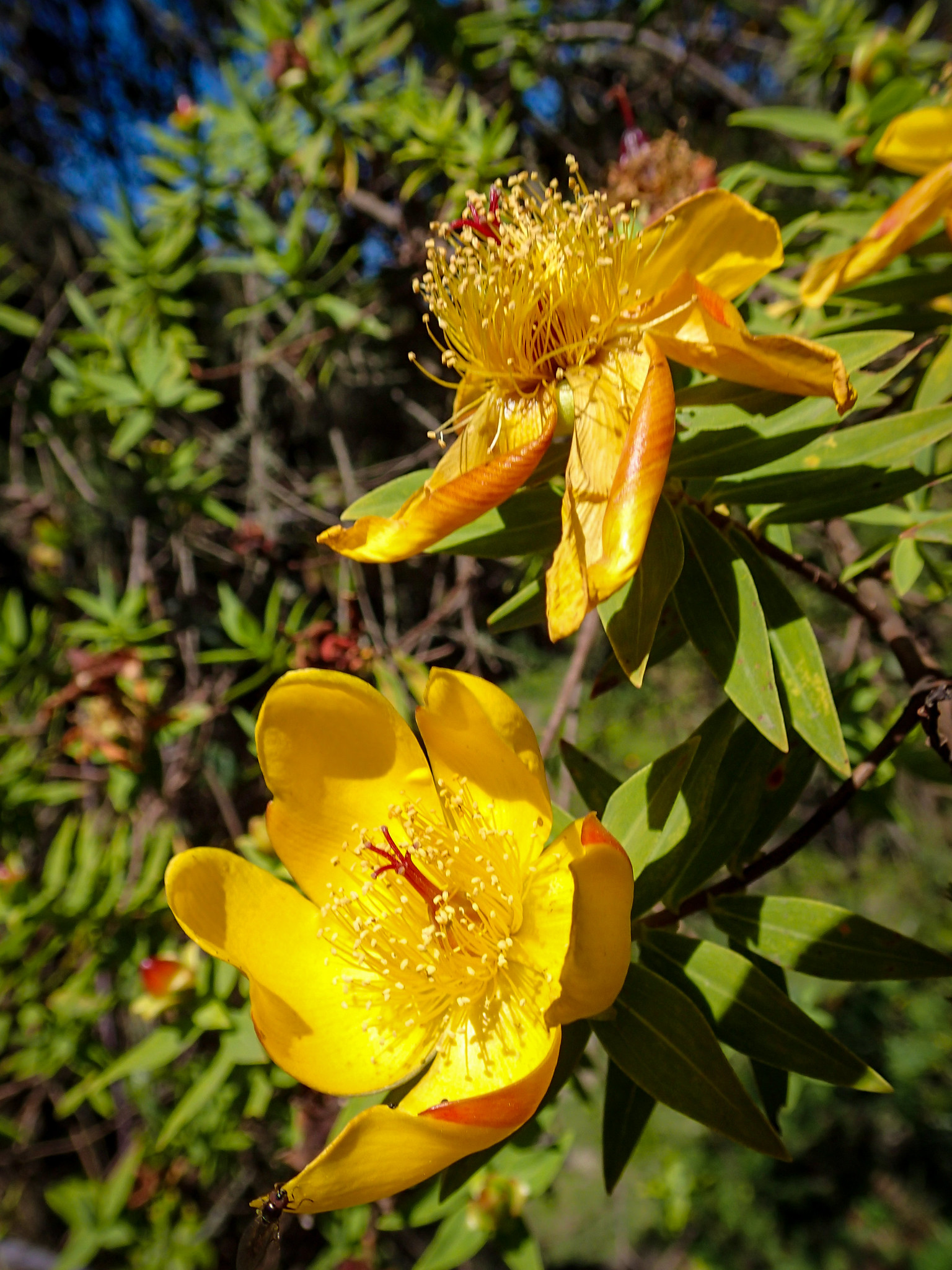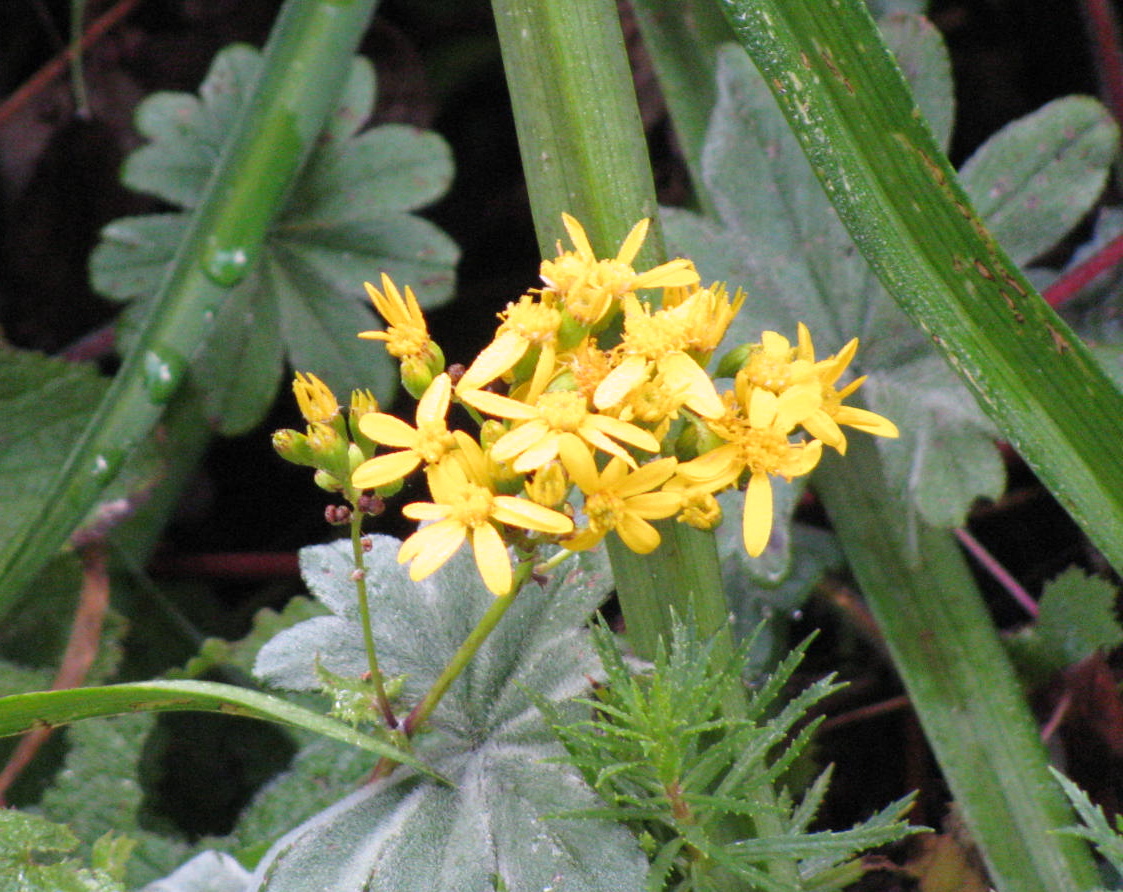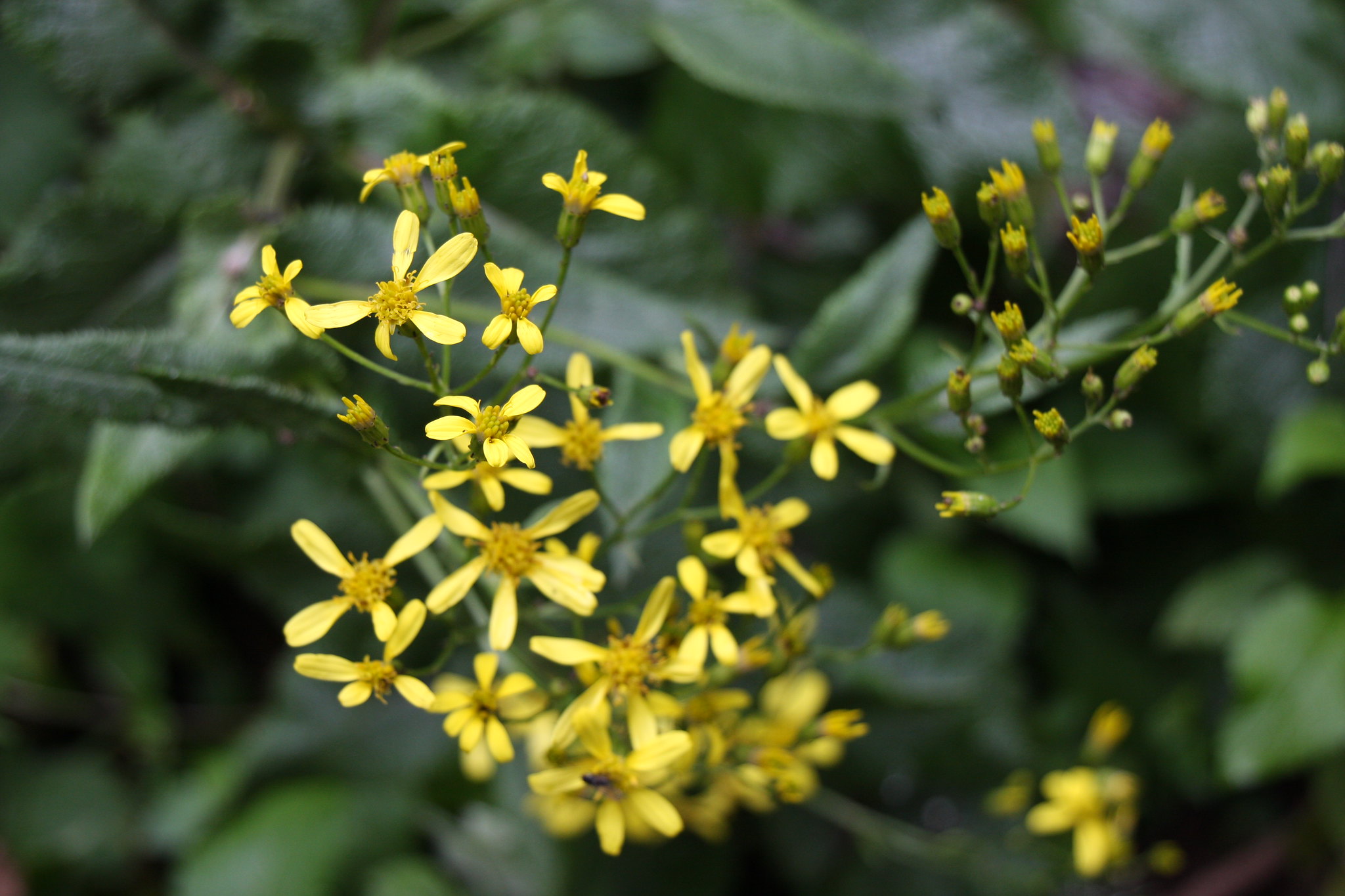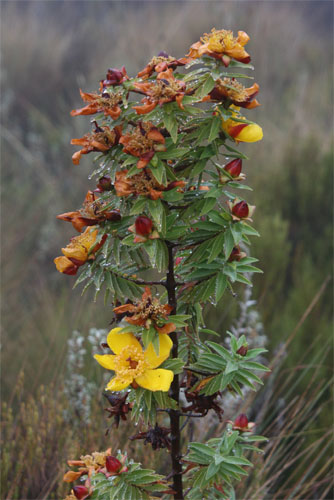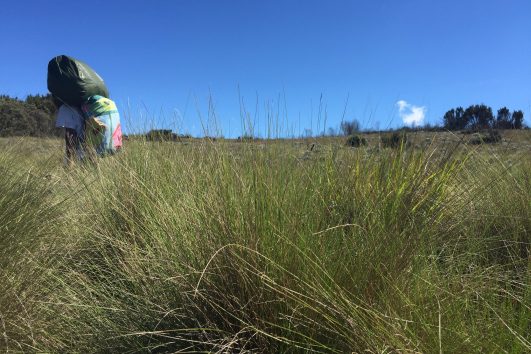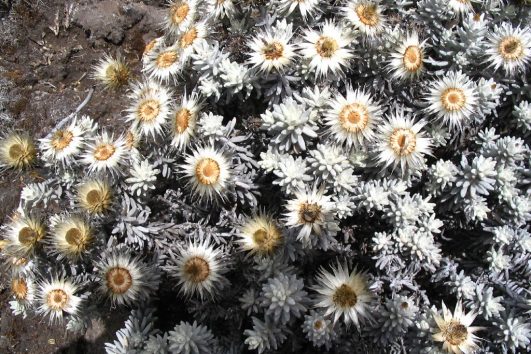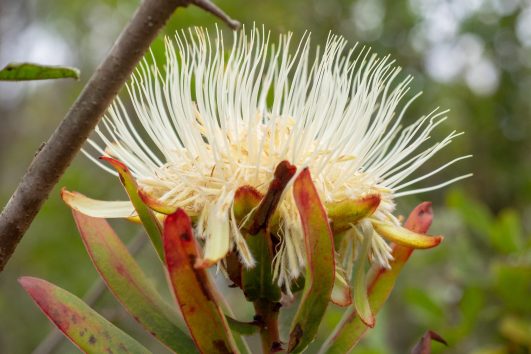St. John’s-wort (Hypericum perforatum) is a flowering plant species known for its medicinal properties, particularly in the treatment of mild to moderate depression. Among the many plants that thrive on Mount Kilimanjaro’s slopes is the St. John’s-wort (Hypericum) species. Known for its bright yellow flowers and medicinal properties, St. John’s-wort adds both colour and herbal significance to Kilimanjaro’s diverse flora.
St. John’s wort, named in honour of John the Baptist due to its flowering around his feast day on June 24th, contains numerous compounds that influence brain chemicals involved in mood regulation.
According to WebMD, primarily, St. John’s wort is utilized for treating depression and related mood disorders, with substantial scientific backing for its effectiveness in cases of mild to moderate depression. Additionally, it’s employed for alleviating menopausal symptoms, though evidence supporting its efficacy for this and other applications remains less conclusive.
In the United States, St. John’s wort is accessible as a dietary supplement. However, due to potential interactions with other medications, France has prohibited its inclusion in products. Conversely, in some countries, its availability is restricted to prescription-only, reflecting concerns over its interaction with pharmaceuticals.
- Botanical Description:
- Appearance: St. John’s-wort is a perennial herb that grows up to 1 meter (3 feet) tall. It has bright yellow, star-shaped flowers with five petals, often containing small black dots along the margins. The leaves are opposite, sessile, and dotted with translucent oil glands that look like perforations when held up to light, hence the species name “perforatum.”
- Flowering: It typically blooms from late spring through to late summer, with peak flowering around the time of the summer solstice, which is near the feast day of St. John the Baptist, giving the plant its common name.
- Habitat:
- St. John’s-wort is native to Europe, parts of Asia, and North Africa but has been introduced to many other parts of the world, including North America, where it can sometimes be considered an invasive species. It thrives in sunny, open areas like meadows, roadsides, and pastures.
- Medicinal Uses:
- Depression: The most well-known use of St. John’s-wort is in treating depression. Numerous studies suggest it can be effective for mild to moderate depression, although its mechanism isn’t fully understood. It’s thought to work by affecting neurotransmitters like serotonin, dopamine, and noradrenaline.
- Other Uses: It’s also used for anxiety, sleep disorders, and somatic symptoms of depressive disorders. Topically, it’s used for wound healing, burns, and skin conditions due to its anti-inflammatory and antimicrobial properties.
- Chemical Composition:
- The active compounds in St. John’s-wort include hypericin, hyperforin, and flavonoids. Hyperforin is believed to be responsible for many of its antidepressant effects.
- Cultural and Historical Significance:
- Historically, St. John’s-wort has been used in various cultures for its supposed magical and medicinal properties. It was believed to ward off evil spirits and was used in rituals. The plant’s flowering around St. John’s Day (June 24) has tied it to many folklore traditions.
- Cautions:
- Interactions: St. John’s-wort can interact with many medications, including antidepressants, birth control pills, anticoagulants, and others, by inducing liver enzymes that metabolize these drugs, potentially reducing their effectiveness or causing adverse effects.
- Side Effects: Common side effects include gastrointestinal upset, dizziness, and confusion. In some cases, it can cause photosensitivity, making the skin more sensitive to sunlight.
- Legal and Regulatory Status:
- In many countries, St. John’s-wort is available over the counter as a dietary supplement or herbal remedy, but its sale and use are regulated due to potential interactions and side effects. In some places, it’s prescribed by doctors for depression.
- Research:
- Ongoing research continues to explore its efficacy and mechanisms of action, as well as its potential in treating other conditions like ADHD, menopausal symptoms, and viral infections.
What is St. John’s-wort?
St. John’s-wort is a group of flowering plants belonging to the genus Hypericum, which is part of the Hypericaceae family. The name “St. John’s-wort” is derived from its traditional blooming period around St. John’s Day (June 24th). This plant is easily recognized by its:
- Bright Yellow Flowers: St. John’s-wort is most identifiable by its vibrant yellow flowers, which have five petals and numerous stamens. The flowers often have small black dots on the edges of the petals, which are glands that produce essential oils.
- Opposite Leaves: The leaves are typically arranged in pairs opposite each other on the stem. They are oval-shaped and may appear dotted with translucent or black glands, giving them a perforated look.
- Woody Stems: Many St. John’s-wort species have a woody base, allowing them to grow as perennial shrubs. This woody structure helps the plant survive in challenging environments, including the high-altitude zones of Kilimanjaro.
St. John’s-wort on Kilimanjaro
Several species of St. John’s-wort can be found on Kilimanjaro, particularly in the lower montane and moorland zones. These areas provide the moderate climate and well-drained soils that St. John’s-wort prefers.
Notable Species on Kilimanjaro:
- Hypericum revolutum: This species, commonly known as East African St. John’s-wort, is well adapted to the high-altitude conditions of Kilimanjaro. It is a shrub that can grow up to 2 meters (about 6.5 feet) tall and is characterized by its bright yellow flowers. Hypericum revolutum is often found in the moorland zone, thriving in the cool, misty climate.
Habitat and Growth Conditions
St. John’s-wort species on Kilimanjaro typically inhabit areas that provide:
- Moderate Temperatures: The plant thrives in cooler temperatures found at higher elevations, such as in the montane and moorland zones of Kilimanjaro. These zones offer a temperate climate that is ideal for St. John’s-wort’s growth.
- Well-Drained Soils: The volcanic soils of Kilimanjaro are well-drained and rich in minerals, providing an ideal substrate for St. John’s-wort. The plant’s roots are well-adapted to absorb nutrients efficiently in these conditions.
- Open Sunlit Areas: St. John’s-wort prefers areas that receive plenty of sunlight. The open landscapes of Kilimanjaro’s moorlands provide ample sunlight, allowing the plant to produce its bright yellow flowers.
Medicinal Uses and Significance
St. John’s-wort is renowned for its medicinal properties, which have been utilized for centuries in herbal medicine. Its presence on Kilimanjaro adds to the mountain’s reputation as a source of valuable natural remedies. Some of the medicinal uses of St. John’s-wort include:
- Treatment of Depression and Anxiety: One of the most well-known uses of St. John’s-wort is for the treatment of mild to moderate depression and anxiety. The plant contains compounds such as hypericin and hyperforin, which are believed to help balance mood by affecting neurotransmitter activity in the brain.
- Wound Healing: St. John’s-wort has been traditionally used to promote the healing of wounds, burns, and insect bites. Its antiseptic and anti-inflammatory properties help prevent infection and reduce inflammation, making it a popular choice in natural first-aid treatments.
- Antiviral and Antibacterial Properties: The essential oils and compounds found in St. John’s-wort have been shown to possess antiviral and antibacterial properties, making the plant useful in treating various infections.
Additional information
| Habitat | Heath & Moorland Zone |
|---|

